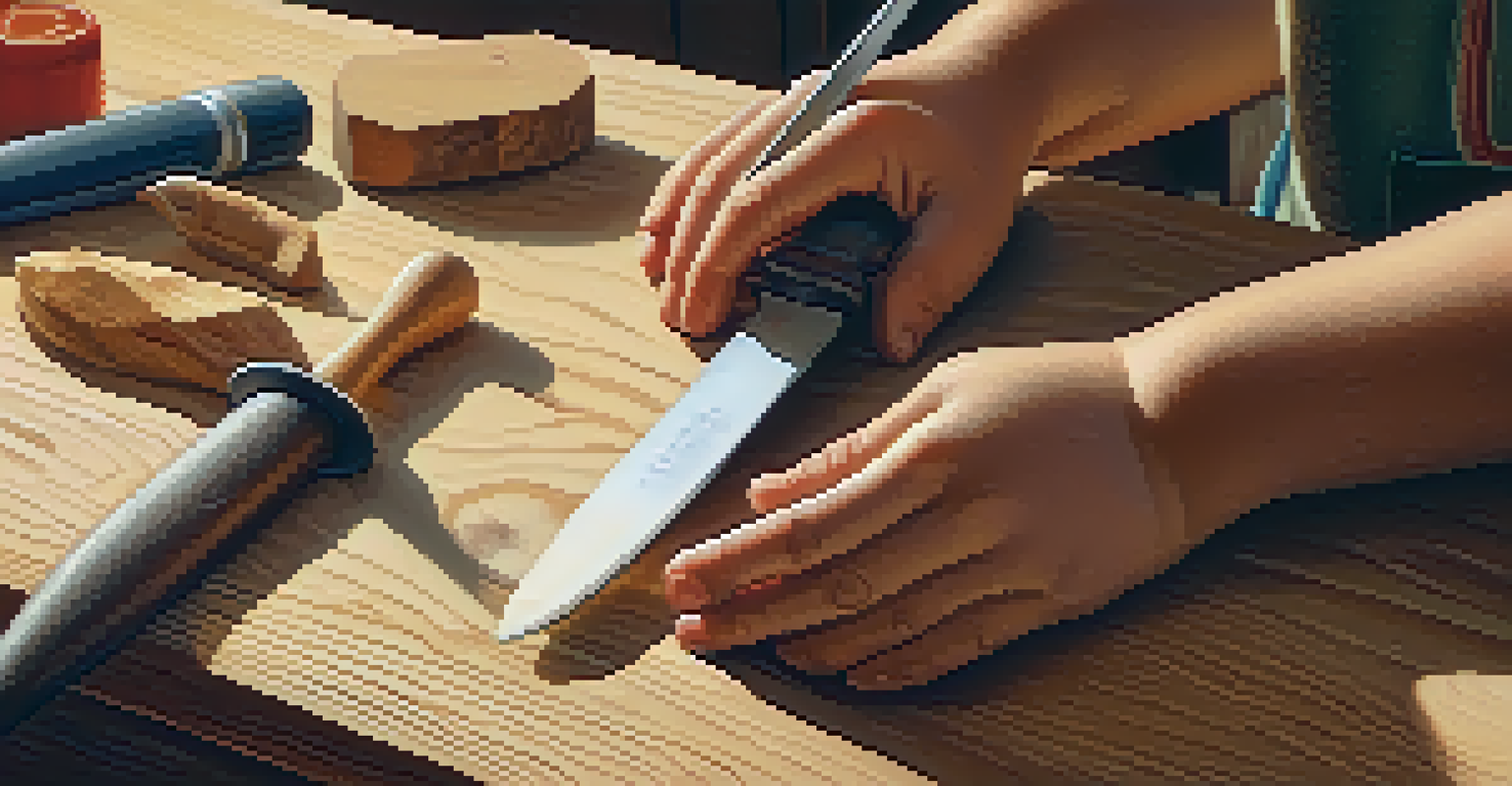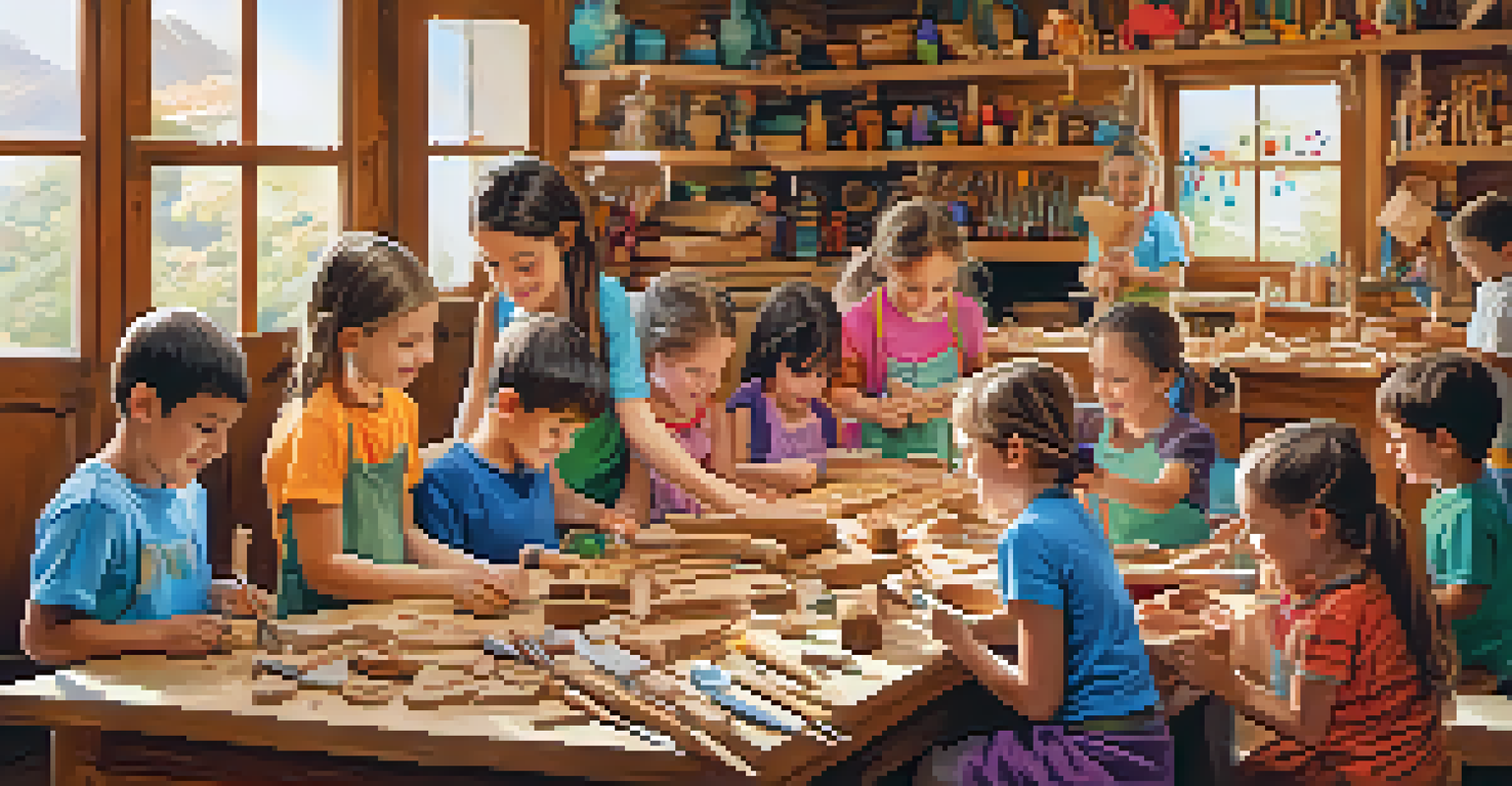Essential Tools for Kids' Wood Carving: A Parent's Guide

Why Wood Carving is Beneficial for Kids
Wood carving is more than just a fun hobby; it's a fantastic way for kids to develop fine motor skills. As they manipulate tools and wood, they enhance their hand-eye coordination and dexterity, which can benefit them in other areas, like writing and sports.
Creativity takes courage.
Additionally, this creative outlet allows children to express themselves artistically. By transforming a simple block of wood into something unique, they not only boost their self-esteem but also learn the value of patience and perseverance.
Moreover, wood carving fosters a strong sense of accomplishment when they complete a project. This sense of achievement can motivate them to take on new challenges, whether in art or in everyday life.
Basic Safety Tips for Young Carvers
Before diving into wood carving, it's crucial to establish safety guidelines to protect your child. Always supervise them and ensure they wear protective gear, like safety goggles and gloves, to minimize the risk of injury.

Teach your kids the importance of using tools properly. Emphasize the need to keep their hands clear of the cutting path and to maintain a firm grip on the wood while carving.
Wood Carving Enhances Skills
Engaging in wood carving helps kids improve fine motor skills, hand-eye coordination, and dexterity.
Lastly, create a designated carving area free from distractions. This controlled environment helps maintain focus and reduces the likelihood of accidents from wandering attention.
Essential Tools for Young Wood Carvers
When starting out, the right tools can make all the difference. A basic carving knife is essential, but for younger kids, consider a safety knife designed for beginners. These often have rounded tips and are easier to handle.
The only way to do great work is to love what you do.
In addition to carving knives, a small whittling knife can be very useful. It allows for more detailed work and is lightweight, perfect for little hands. Pair it with some soft basswood, which is forgiving for beginners.
Lastly, don’t forget about a sturdy workbench or carving board. A stable surface keeps the wood steady, allowing your child to focus on the task without worrying about it slipping.
Choosing the Right Wood for Carving Projects
Selecting the right wood can greatly influence your child's carving experience. Softwoods, like pine and cedar, are ideal for beginners due to their ease of carving and availability, making them perfect for simple projects.
Hardwoods, like oak or maple, can be more challenging but offer beautiful finishes. Once your child gains confidence, you can introduce them to these woods for more intricate designs.
Safety First for Young Carvers
Establishing safety guidelines and proper tool usage is essential to protect children while they carve.
Additionally, consider purchasing pre-cut carving blocks. These provide a head start for kids, allowing them to focus on the carving process rather than shaping the wood first.
Project Ideas for Kid-Friendly Wood Carving
To keep your kids engaged, suggest simple projects that are achievable yet rewarding. Starting with basic shapes like animals or spoons can help build their skills while keeping frustration at bay.
As they progress, encourage them to create personalized items, such as keychains or small figurines. These projects not only develop their abilities but also provide a sense of ownership and pride in their work.
Incorporating seasonal themes, like carving pumpkins for Halloween or ornaments for Christmas, can also make the activity more exciting and relevant throughout the year.
Encouraging Creativity Through Carving
Wood carving is a wonderful way to spark creativity in children. Encourage them to think outside the box and come up with their own designs, rather than just following templates.
You can also introduce mixed media by combining wood with paints or other materials. This allows for more expressive projects, enabling them to explore their artistic side.
Creative Projects Boost Confidence
Suggesting achievable projects fosters creativity and a sense of accomplishment in children as they carve.
Remember, the goal is not just to create a finished product but to enjoy the process. Celebrate their efforts and creativity, regardless of the outcome.
Maintaining Tools for Longevity
Taking care of carving tools ensures they remain safe and effective for your child. Regularly check the blades for dullness and sharpen them as needed. A sharp knife is not only easier to use, but it also reduces the risk of slipping.
It's also important to clean tools after each use. A simple wipe down can prevent rust and prolong the life of the tools, ensuring they are always ready for the next carving session.

Lastly, teach your kids to store their tools properly. A designated toolbox or pouch not only keeps everything organized but also reinforces the importance of responsibility and care.